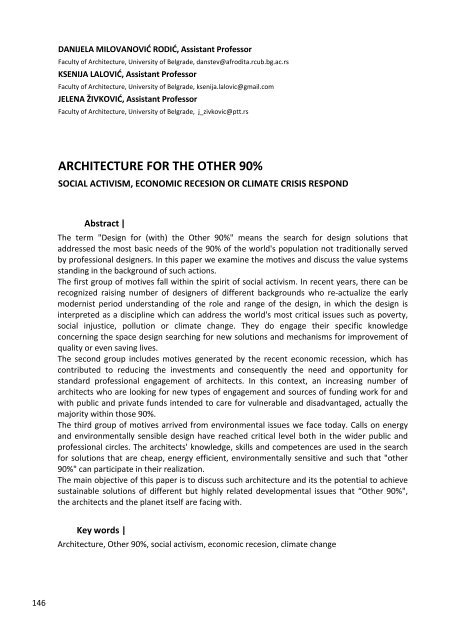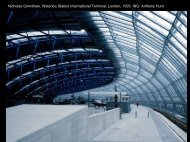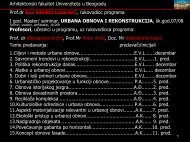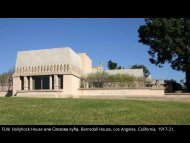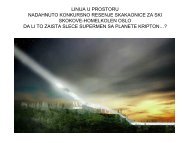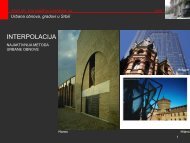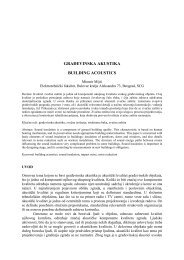Architecture and Ideology
Architecture and Ideology
Architecture and Ideology
You also want an ePaper? Increase the reach of your titles
YUMPU automatically turns print PDFs into web optimized ePapers that Google loves.
146<br />
DANIJELA MILOVANOVIĆ RODIĆ, Assistant Professor<br />
Faculty of <strong>Architecture</strong>, University of Belgrade, danstev@afrodita.rcub.bg.ac.rs<br />
KSENIJA LALOVIĆ, Assistant Professor<br />
Faculty of <strong>Architecture</strong>, University of Belgrade, ksenija.lalovic@gmail.com<br />
JELENA ŽIVKOVIĆ, Assistant Professor<br />
Faculty of <strong>Architecture</strong>, University of Belgrade, j_zivkovic@ptt.rs<br />
ARCHITECTURE FOR THE OTHER 90%<br />
SOCIAL ACTIVISM, ECONOMIC RECESION OR CLIMATE CRISIS RESPOND<br />
Abstract |<br />
The term "Design for (with) the Other 90%" means the search for design solutions that<br />
addressed the most basic needs of the 90% of the world's population not traditionally served<br />
by professional designers. In this paper we examine the motives <strong>and</strong> discuss the value systems<br />
st<strong>and</strong>ing in the background of such actions.<br />
The first group of motives fall within the spirit of social activism. In recent years, there can be<br />
recognized raising number of designers of different backgrounds who re‐actualize the early<br />
modernist period underst<strong>and</strong>ing of the role <strong>and</strong> range of the design, in which the design is<br />
interpreted as a discipline which can address the world's most critical issues such as poverty,<br />
social injustice, pollution or climate change. They do engage their specific knowledge<br />
concerning the space design searching for new solutions <strong>and</strong> mechanisms for improvement of<br />
quality or even saving lives.<br />
The second group includes motives generated by the recent economic recession, which has<br />
contributed to reducing the investments <strong>and</strong> consequently the need <strong>and</strong> opportunity for<br />
st<strong>and</strong>ard professional engagement of architects. In this context, an increasing number of<br />
architects who are looking for new types of engagement <strong>and</strong> sources of funding work for <strong>and</strong><br />
with public <strong>and</strong> private funds intended to care for vulnerable <strong>and</strong> disadvantaged, actually the<br />
majority within those 90%.<br />
The third group of motives arrived from environmental issues we face today. Calls on energy<br />
<strong>and</strong> environmentally sensible design have reached critical level both in the wider public <strong>and</strong><br />
professional circles. The architects' knowledge, skills <strong>and</strong> competences are used in the search<br />
for solutions that are cheap, energy efficient, environmentally sensitive <strong>and</strong> such that "other<br />
90%" can participate in their realization.<br />
The main objective of this paper is to discuss such architecture <strong>and</strong> its the potential to achieve<br />
sustainable solutions of different but highly related developmental issues that “Other 90%",<br />
the architects <strong>and</strong> the planet itself are facing with.<br />
Key words |<br />
<strong>Architecture</strong>, Other 90%, social activism, economic recesion, climate change


